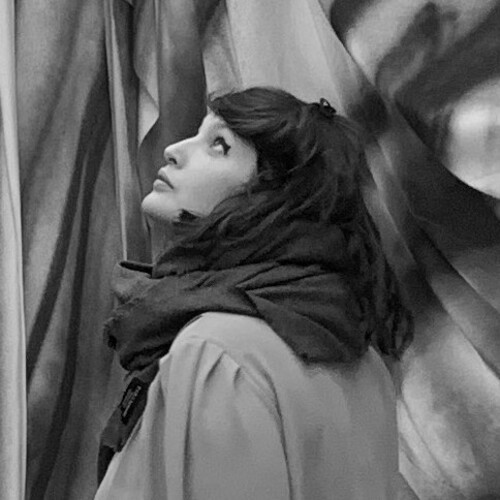Chair
Jens Ruchatz
Photographic Migrations.
Negotiating the Distinction of Periodical and Book
Abstract
As inherently reproducible images, photographs are prone to be re-used over and over again, arranged in ever-changing constellations, as Geoffrey Batchen has recently pointed out. This paper intends to show how the uses and re-uses of photographs migrating from periodicals to books does rely on specific conceptions of the media involved, which are played out in the specific ways the layout, writing-image relations and materialities are handled. The use of photographic images is one way in which the journal and the book alike produce and display their particular mediality.
To illustrate and explore this proposition, this paper will examine a few instances in which a particular photo is observed as it ›migrates‹ from periodical to book. These examples are expressly chosen for their diversity, and will range from the re-publication of photojournalistic coverage in James H. Hare’s A Photographic Record of the Russo-Japanese War (1905) to the transformation of Horst P. Horst’s portraits and fashion pictures from Vogue magazine into Photographs of a Decade (1944). The thematic diversity aims at demonstrating that the interest in media distinction holds across different topics and times. The historical range serves to make the point that the media get more distinct as the co-evolve by adapting and developing their layout patterns.

Jens Ruchatz
Jens Ruchatz is professor of media studies at Philipps-University Marburg. Since 2016 he’s acted as deputy speaker of the research unit Journalliteratur, in which he leads sub-project 5 »A MediaOriented Comparison of Fragment Migration: Photographs in Periodicals and Books in the Twentieth Century«.
Wednesday, 16th June 2021 at 16.30 CEST (UTC+2)
Alice Morin
Transatlantic Crossings: French/American (Re-)Uses of Editorial Images in Vogue 1920s–1940s
Abstract
The circulation of images and their regular re-uses were central to the »first period« of Vogue’s international diffusion. From 1920—upon the foundation of the French edition— until 1940—when it ceased publication under the Occupation—, the Paris Vogue office actively produced textual, but mostly visual content for the New York. This content was then published together in the French and American versions, yet with notable differences. Considering these »travelling« photographs under the prism of their (re)uses informs us on the materiality of magazine-making at the time, as well as on the fluxes of forms and ideas, and their adaptation to specific contexts.
The observation of various complementary sources—documents from the Condé Nast Archives such as work memos, letters and editorial formulas articulating mission statements on the one hand, and some selected reference-issues serving as case studies on the other hand—will indicate how two alternative visions of a magazine engaged into a dialogue through several intertwined operations. Indeed, while a first phase in the 1920s saw the publication of French Vogue as a mere translation of the American edition, this paper is especially concerned with the second phase when, in the late 1920s and 1930s, the former built its distinct editorial voice. Variations in dates of publication, disposition, layout, text and the occasional reworking of images are to be considered, to assess how two strong ensembles derived from one visual set. At that moment, shared technologies and aesthetics grappled with socio-cultural specificities for a while until, in the postwar period, a new model of publishing leaning more decidedly on these national specificities took over at Vogue.
This video was removed in compliance with the author’s preferences.

Alice Morin
Alice Morin is postdoctoral research associate to the »Fragmentwanderungen« (A Media-Based Comparison of Fragment Migration: Photographs in Periodicals and Books in the Twentieth Century) project, as part of the unit Journalliteratur. She holds a PhD in American Studies by the Université Sorbonne Nouvelle (2018), where she also taught American history.
Wednesday, 16th June 2021 at 16.30 CEST (UTC+2)
Vincent Fröhlich
Film is what belongs to Film.
The Re-use of Photographic Pictures and Typographies in Illustrated Film Magazines
Abstract
So far, illustrated film magazines have mainly been included in research as secondary objects—the focus was instead on journalistic, political or historical aspects. In this paper, however, the mediality and visuality of illustrated film magazines will be the focus of attention. As an important aspect of this mediality, it will be shown in what ways exemplary German (e.g. Neue Filmwelt) illustrated film magazines remediate film, especially through the reuse of images and typographies, by referring to other print publications and places of film representation. Examples will demonstrate how illustrated film magazines incorporate and transform poster layouts, illustrations and typographies, poster photos, lobby and cigarette cards into a journal-specific layout.
The general thesis is that the representation of the medium film entails that media also representing film are included, or at least approached, in the film journal’s specific representation. What film is in the illustrated film magazine is above all what is understood as film, and what other representations of film in other media understand as being filmic. Thus, such representations allow us to gain knowledge about the understanding of the media involved in the illustrated film journal at a given time: it is a constant negotiation of medial self-perception/self-presentation (magazine) and of the reference to other media (photography and film). Not only other media are referenced here, but also places of media representation, such as movie theatre showcases, as important places that shape the perception of the said medium. Each time these different processes of representation mean that the medium to be represented, or more specifically, certain characteristics relative to the medium to be represented, are transformed into the aesthetics inherent to the medium to be represented, the illustrated film magazine.

Vincent Fröhlich
Dr. Vincent Fröhlich is head of sub-project 8 »Seeing Film between the Lines: Remediation and Aesthetics of the Film Periodical« which is part of the research unit Journalliteratur. The project is situated at the Institute for Media Studies at the University of Marburg.
Wednesday, 16th June 2021 at 16.30 CEST (UTC+2)
Discussion
You are invited to discuss the papers in this section in advance of the live Q&A Session using the comment function below. Please make sure to indicate which paper you wish to comment on.


Vincent, ich liebe, wie du die Maße des Magazins auf deinen Folien zeigst! Kann ich es screengrabben und auf Twitter posten?
I believe it was Tom Gretton who, being an art historian by trade, insisted that physical dimensions should be provided whenever possible, and we took that to heart, Vincent especially so. 🙂
Marie, sehr gerne – danke, dass Du nachfragst. Christian hat Recht, die Inspiration dazu stammt von Tom Gretton. Allerdings hat Tom die Maße nur genannt und ich versuche mit den im Verhältnis dazu passenden Piktogrammen auch einen visuellen Eindruck von den Abmessungen des Materials zu vermitteln.